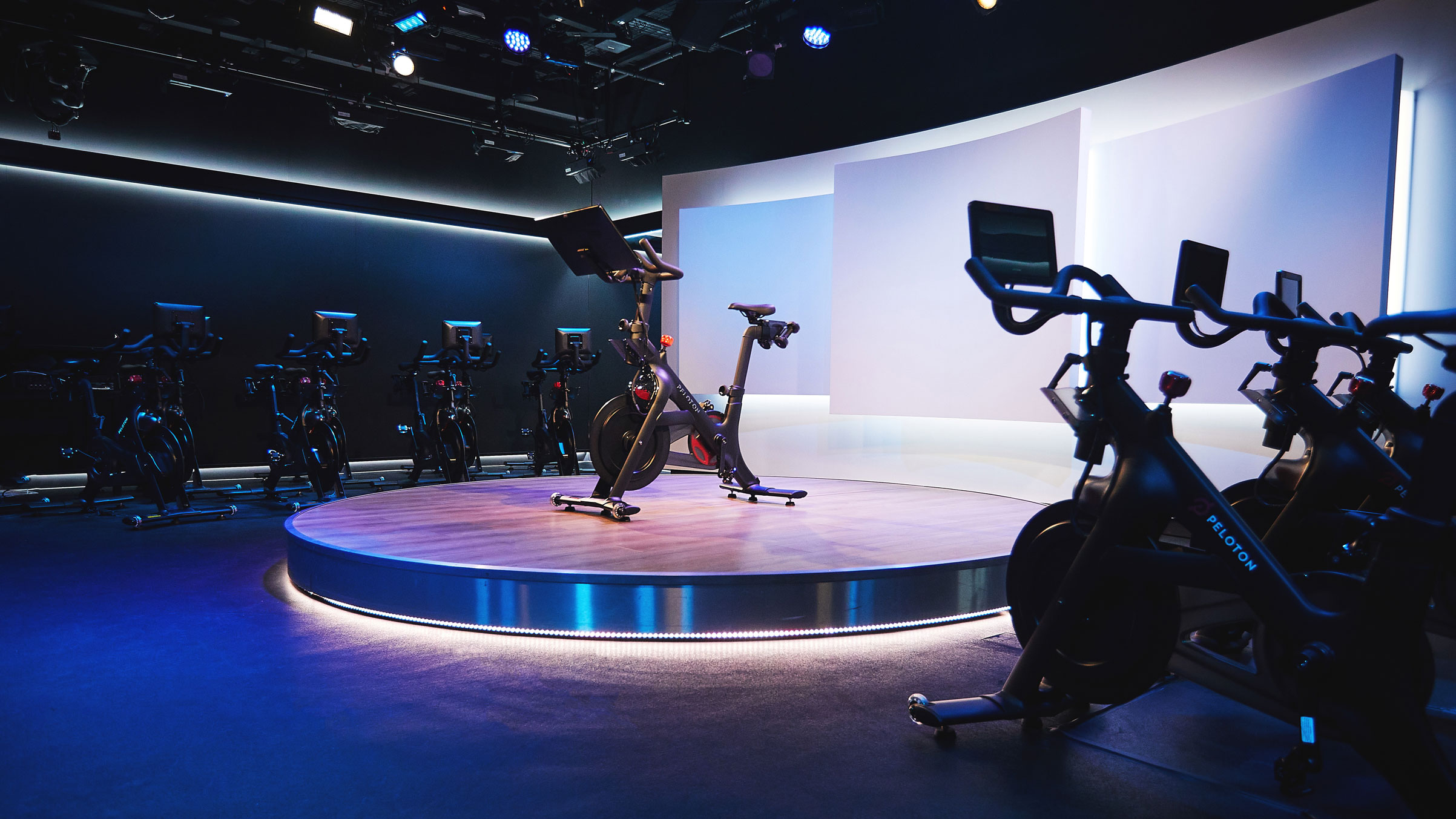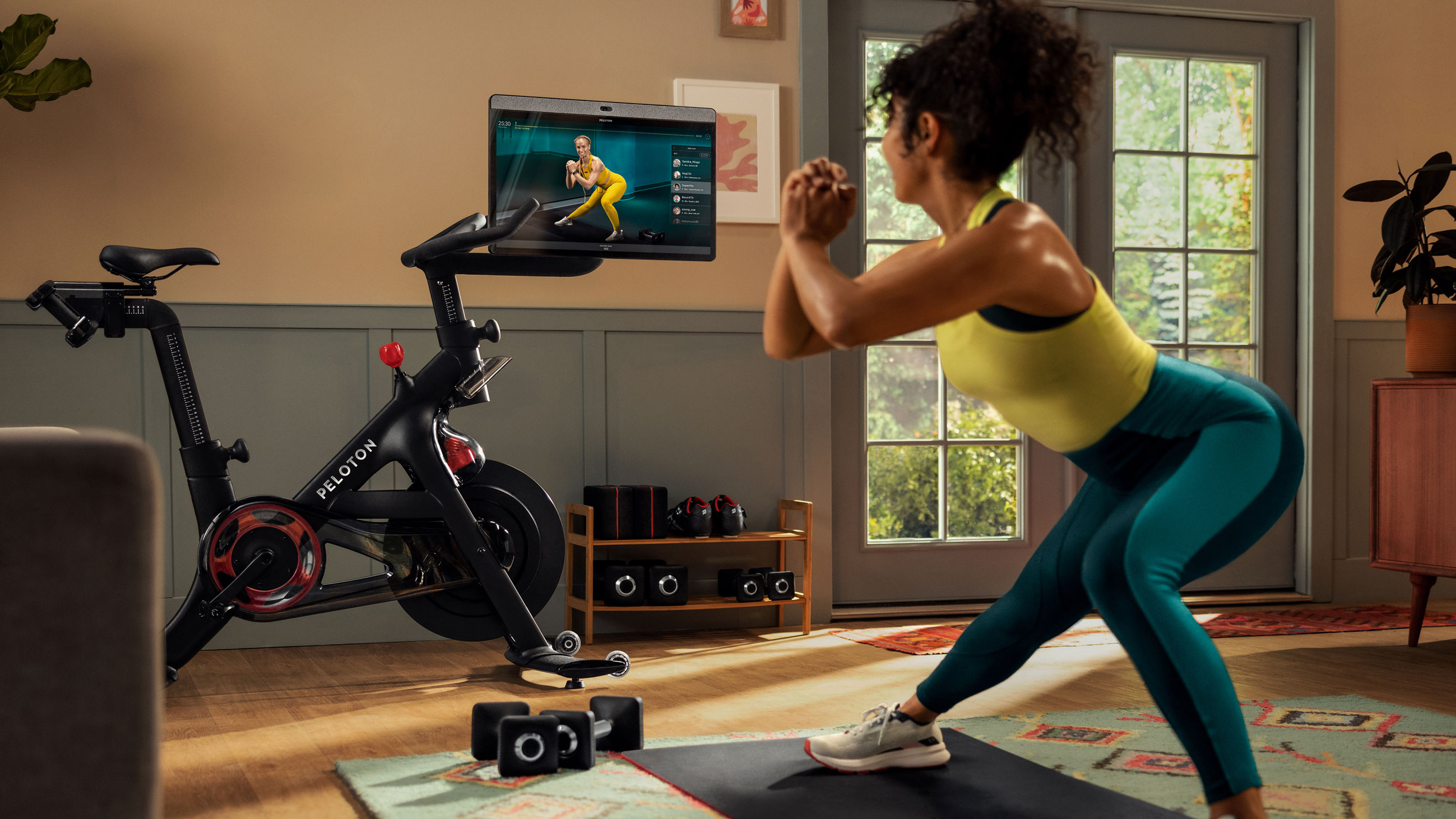Exclusive: Despite everything, Peloton still has good value for its users
The company is struggling, but a Peloton may still be worth it

A little over a month ago, I was hard at work on the Peloton Tread. Peloton had just opened a brand new London branch of its Peloton Studios, a unique combination of content production house, a gym that hosts spin and treadmill classes, and a showroom for its latest tech. The music was pumping hard, with running instructor Susie Chan yelling encouragement over the pounding bass.
“These guys came all the way here from Virginia to be here!” she roared, despite galloping along at a pace that would have easily winded me. The couple from Virginia threw their fists in the air and ran harder. On my Peloton Tread’s screen, I saw one of them overtake me on the class leaderboard, so I gritted my teeth and turned up the speed on my machine. I wasn’t having that.
Such is the devotion Peloton inspires in its members. Everything about the experience is designed to keep you running faster, competing against others, chasing those badges and points as you work your way to the top of the leaderboard, and crucially, coming back for more. A way to get you addicted to exercise? It’s enough to make you want to hover over the “buy” button and make that investment in your health for 2023.
But despite fanatical devotion from its members, Peloton has been getting a very bad rap in recent years, from being accused of hawking potentially dangerous equipment, to being a magnet for hackers, to the company itself acting unethically and axing thousands of jobs at a stroke. We’re getting to the time of year in which everyone starts thinking about the big purchases they want to make in the Black Friday deals, so the only question that really matters for potential Peloton buyers is this: Is a Peloton Bike, Peloton Tread, Guide (or very soon, the new Peloton Row rowing machine), going to be worth your money as we approach 2023?

How Peloton keeps its users coming back
For a major purchase like a piece of Peloton equipment to be worthwhile, you’re going to need to use it an awful lot. Fortunately, Peloton is very good at making you want to use it a lot, and it all comes down to the content it produces.
Pete Flamman, Peloton’s VP of Content International, spoke to us in an exclusive interview.
“Every aspect of Peloton is around trying to take away those reasons saying no and give people a reason to say yes.”
Get daily insight, inspiration and deals in your inbox
Sign up for breaking news, reviews, opinion, top tech deals, and more.
Flamman said Peloton produces around 1,000 hours of new content each month in a variety of disciplines, from the obvious Bike and Tread sessions to yoga, HIIT and meditation classes. But it’s the live aspect many people respond to, as instructors can talk to users directly during the live stream. “A handful of classes are pre-recorded, because they show some complexity to them. But the vast majority, it's all done live. And then of course, you can then take them on demand.”
After the classes are delivered live, they enter Peloton’s content library. In addition to live classes, these pre-recorded sessions are served up to you in blocks like any streaming service, based on your history.
“Our platform means that you will very quickly get to the stuff that you're looking for. You can filter, you can search, we will serve up the types of content that are your favorites and make new suggestions,” says Flamman. “We've got lots of fitness activities; we're in connected platforms and the big technology companies, so we've got lots of information on what people are doing.”

As Vice President of Content International, Pete Flamman leads on producing Peloton's vast library of live and on-demand classes. He also oversaw the launch of Peloton Studios London.
At first, the price of a Peloton Bike (the basic Bike is $1,495 in the US, £1,345 in the UK and AU$2,145 in Australia), plus the hefty subscription cost ($44 per month in the US, £40 per month in the UK and AU$78 in Australia) seems like a lot for a piece of fitness equipment, and that high buy-in is very off-putting. But in some ways, that high investment drives users to get the most out of the machine.
It’s probably worth thinking of Peloton less like a piece of equipment and more like a streaming service. The Bike, Tread or Guide is like the initial investment you make by buying a TV, and the monthly subscription to Peloton’s library of content is the equivalent of subscribing to Netflix or Amazon Prime. And by combining the strategies of streaming services and community-based social networks like Facebook, Peloton battles for your attention hard.
“What we do with that data is gamification,” says Flamman. “So you can collect badges on streaks, you can get personal bests, you can get feedback around it, you'll get shoutouts from instructors, or actually from the community. So, you know, a huge part of what keeps people coming back is the community.”
This social-media style 'gamifying' strategy is part of what keeps Peloton users coming back for more, and the most dedicated super-fans traveling hundreds of miles to attend launch events. A 2019 paper from University of Vienna researchers on social media’s gamification said: “previous research finds a wide variety of game-like elements in a social media context acting as ‘microsuasion’ elements, persuading users to spend more time on a [social network] or otherwise adapt human behaviors to the needs of company business models.”
It sounds insidious, but that’s the world we live in. Make no mistake, Peloton’s content and framework is equal parts social network and streaming service 'microsuading' you to keep using its kit. Combine the natural endorphin high you get after a sweat session, the company's gamification strategy, and the high cost that encourages users to get more out of their major purchase, and it’s no wonder Peloton has a reputation for getting its user base addicted to exercise. It’s a bona fide recipe for success. Right?

Peloton's post-pandemic struggles
Unfortunately, Peloton’s suffered a string of terrible headlines and poor business decisions over the last few years that have affected the company’s earnings and made potential customers think twice about pulling the trigger and buying in. The company saw a massive boom during the pandemic, as we were all stuck at home with gyms closed for months — the ideal situation for a home fitness brand. Peloton order times stretched into the weeks and months as the company struggled to cope with the surge. Sales were up 66% by May 2020.
Flamman said: “We had a huge surge in demand. Of course, a lot of people couldn't get to the gym; or, spending more time at home [people] suddenly realized there were lots of things that they could start doing, going from working at home to also working out at home. And so that happened, but that just tapped into the range of what we [were] already doing.”
While the rest of us were doing yoga in front of YouTube, Peloton users were enjoying live-streamed, high-quality connected classes and racking up points and badges. I strongly believe this unprecedented demand for home fitness spawned the Peloton Guide, a camera that tracks your movement during HIIT and strength classes, which unfortunately wouldn’t arrive until 2022 when everyone got back in the gym.
Inevitably, this unexpected, temporary surge put Peloton on the back foot, and a string of disasters followed. A total of 335 reports of faulty units, and 87 injuries, culminated in the tragic death of a child who got too close to an active Tread+. Peloton acted quickly and recalled 125,000 Tread+ units, but people were scared. Only recently, mere days ago at the time of writing, Peloton announced it will extend the recall period, during which users will be able to get a full refund, into 2023.
In June of 2021, Peloton disabled the Just Run feature on its Treads, forcing users who didn’t pay the $39 subscription fee to shell out or be stuck with an unusable machine. They later walked this decision back after a public outcry. More headlines occurred when fictional characters on TV shows And Just Like That and Billions physically suffered or died after riding their Pelotons.
Fortunately, it remains very unlikely your Bike, Tread or Row will lead to injury if it’s properly used, but another consideration reared its head when Joe Biden entered the White House and attempted to bring his Peloton with him: security. Connected devices with cameras and microphones are always at risk of hackers, and questions were asked about Peloton’s native security software.
Although the risk is no greater than other connected devices such as smart speakers or TVs, the resulting bad press did Peloton no favors. In February 2022, Peloton cut 2,800 jobs, and CEO John Foley were among those who left. Three more rounds of layoffs followed. Some outlets are reporting Peloton has a year to save itself or risk being acquired by a bigger tech firm — or worse, go under entirely.

Is Peloton kit still worth buying?
So, what does this all mean for current Peloton users and potential new joiners? For new customers, it might actually be beneficial, with easier, cheaper ways to access Peloton’s full suite of content than ever before. In a very revealing shareholder memo, new CEO Barry McCarthy dished on his continuing plans to roll out fitness-as-a-service, a plan to include a Peloton Bike and membership in a single monthly subscription fee — which can be canceled at any time, resulting in the bike being collected and returned to Peloton. An anonymous source I spoke to within the company intimated this was on the way sooner than we might think.
However, other than these new initiatives, Peloton’s troubles mean very little to its users right now. Peloton is still churning out its monthly content quotas, still bringing out new products (the Peloton Row is hitting shelves now, necessitating a whole new genre of rowing content) and it’s even opening glossy studios in central London, where it hosts its live classes. If you get an opportunity to go, either to the London studios or the New York one, I highly recommend the experience. Despite my skepticism, the infectious energy of the class ended up winning me over, and I fought hard on that leaderboard to finish a respectable fourth.
I was pumped after my first Peloton experience, and I could see how it gets addictive, but as I wandered around the studio, I had to wonder if it was all a house of cards. The luxurious showers with underfloor heating, the bougie upstairs cafe slinging pastries and smoothies, the big entrance hall which felt like a Tesla showroom… the whole place seemed at odds with the company’s apparent dire straits.
I keep thinking back to the couple who came over from the US to be there. They weren’t the only superfans present: there were other Peloton members on the leaderboard of the class that day, both in their own homes and in the room with me, with over 1,000 hours logged on their Peloton accounts, demonstrated by the badges winking next to their names. And regardless of how many units Peloton sells in the future, as long as it can continue producing the content its users crave, then it’s hard to say these people haven’t made a worthwhile purchase.
If you’re looking to spend hundreds of hours on a piece of fitness equipment, and if that equipment and included membership can get you exercising and moving towards a healthier lifestyle, I would say yes, Peloton still holds a lot of value despite its current high price.
It’s like any other streaming service subscription such as Netflix, Amazon or Disney Plus; if you like the content and watch the content, it’s worth continuing to subscribe to that service. You just have to buy the equivalent tech that goes with it, whether it's a 4K TV or a premium-priced exercise bike, to get the most out of it.
Peloton might cost far more than your average piece of exercise equipment, but if you believe you’re going to love Peloton’s content, and get involved in that community, it’s probably worth the investment. Just keep an eye on the deals to shave a few hundred dollars or pounds off the asking price, to squeeze all the value you can out of the kit.

Matt is TechRadar's expert on all things fitness, wellness and wearable tech.
A former staffer at Men's Health, he holds a Master's Degree in journalism from Cardiff and has written for brands like Runner's World, Women's Health, Men's Fitness, LiveScience and Fit&Well on everything fitness tech, exercise, nutrition and mental wellbeing.
Matt's a keen runner, ex-kickboxer, not averse to the odd yoga flow, and insists everyone should stretch every morning. When he’s not training or writing about health and fitness, he can be found reading doorstop-thick fantasy books with lots of fictional maps in them.